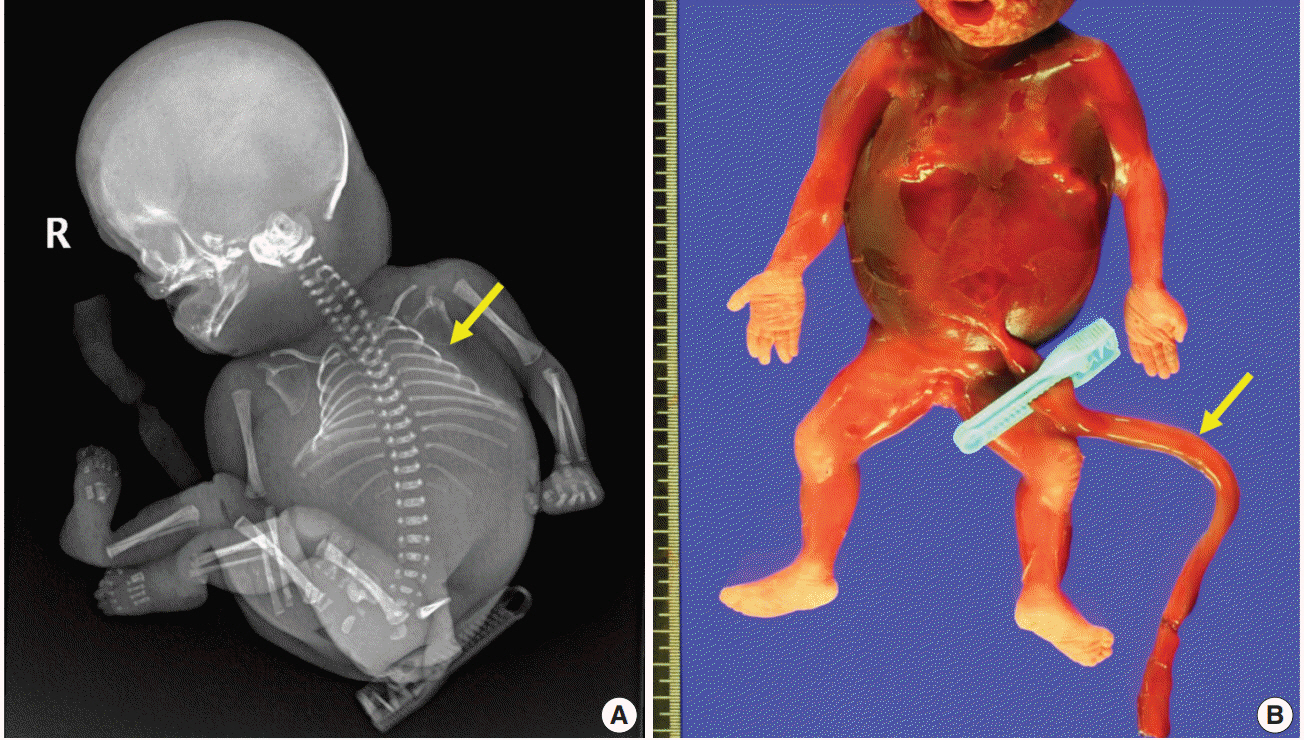J Pathol Transl Med.
2019 Mar;53(2):145-147. 10.4132/jptm.2018.10.24.
Wharton Jelly Hair in a Case of Umbilical Cord Stricture and Fetal Death
- Affiliations
-
- 1Department of Pathology, Asan Medical Center, University of Ulsan College of Medicine, Seoul, Korea. ckim@amc.seoul.kr
- 2Department of Obstetrics and Gynecology, Asan Medical Center, University of Ulsan College of Medicine, Seoul, Korea.
- KMID: 2465456
- DOI: http://doi.org/10.4132/jptm.2018.10.24
Abstract
- No abstract available.
Figure
Reference
-
1. Proctor LK, Fitzgerald B, Whittle WL, et al. Umbilical cord diameter percentile curves and their correlation to birth weight and placental pathology. Placenta. 2013; 34:62–6.
Article2. Baergen RN. Cord abnormalities, structural lesions, and cord “accidents”. Semin Diagn Pathol. 2007; 24:23–32.
Article3. Horn LC, Faber R, Stepan H, Simon E, Robel R, Wittekind C. Umbilical cord hypercoiling and thinning: a rare cause of intrauterine death in the second trimester of pregnancy. Pediatr Dev Pathol. 2006; 9:20–4.
Article4. Benirschke K. Obstetrically important lesions of the umbilical cord. J Reprod Med. 1994; 39:262–72.5. Lee JK, Jang HL, Kang BH, et al. Percentile distributions of birth weight according to gestational ages in Korea (2010-2012). J Korean Med Sci. 2016; 31:939–49.
Article6. Jung SI, Lee YH, Moon MH, et al. Reference charts and equations of Korean fetal biometry. Prenat Diagn. 2007; 27:545–51.
Article7. Chitkara U, Rosenberg J, Chervenak FA, et al. Prenatal sonographic assessment of the fetal thorax: normal values. Am J Obstet Gynecol. 1987; 156:1069–74.
Article8. Benirschke K, Burton GJ, Baergen RN. Pathology of the human placenta. 6th ed. New York: Springer-Verlag;2016. p. 403.9. Peng HQ, Levitin-Smith M, Rochelson B, Kahn E. Umbilical cord stricture and overcoiling are common causes of fetal demise. Pediatr Dev Pathol. 2006; 9:14–9.
Article10. Aljitawi OS, Xiao Y, Zhang D, et al. Generating CK19-positive cells with hair-like structures from Wharton’s jelly mesenchymal stromal cells. Stem Cells Dev. 2013; 22:18–26.
Article
- Full Text Links
- Actions
-
Cited
- CITED
-
- Close
- Share
- Similar articles
-
- A Case Of Intrauterine Fetal Death Due To Stricture Of The Umbilical Cord
- Fetal Death Secondary to Constriction and Torsion of Umbilical Cord: An autopsy case
- A Case of Multiple Umbilical Cord Cyst Associated with Intrauterine Fetal Death
- One Case of Monoamniotic Twin with Entanglement of Umbilical Cord and a Single Fetal Death in Uterus - One Case Report -
- A case of intrauterine fetal death from umbilical cord torsion




